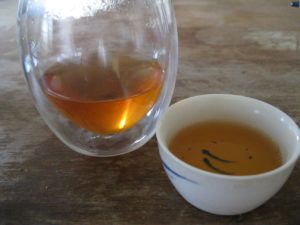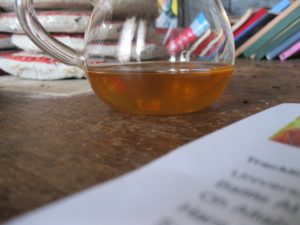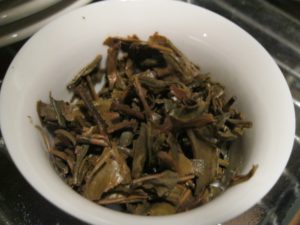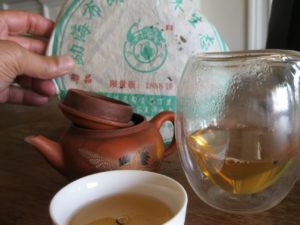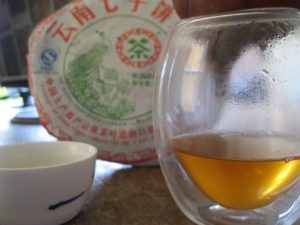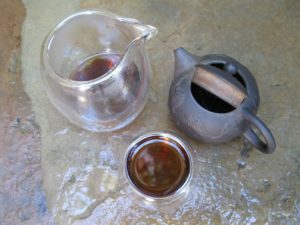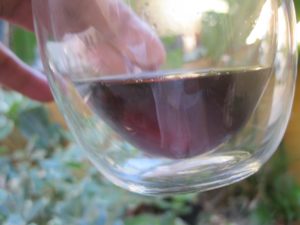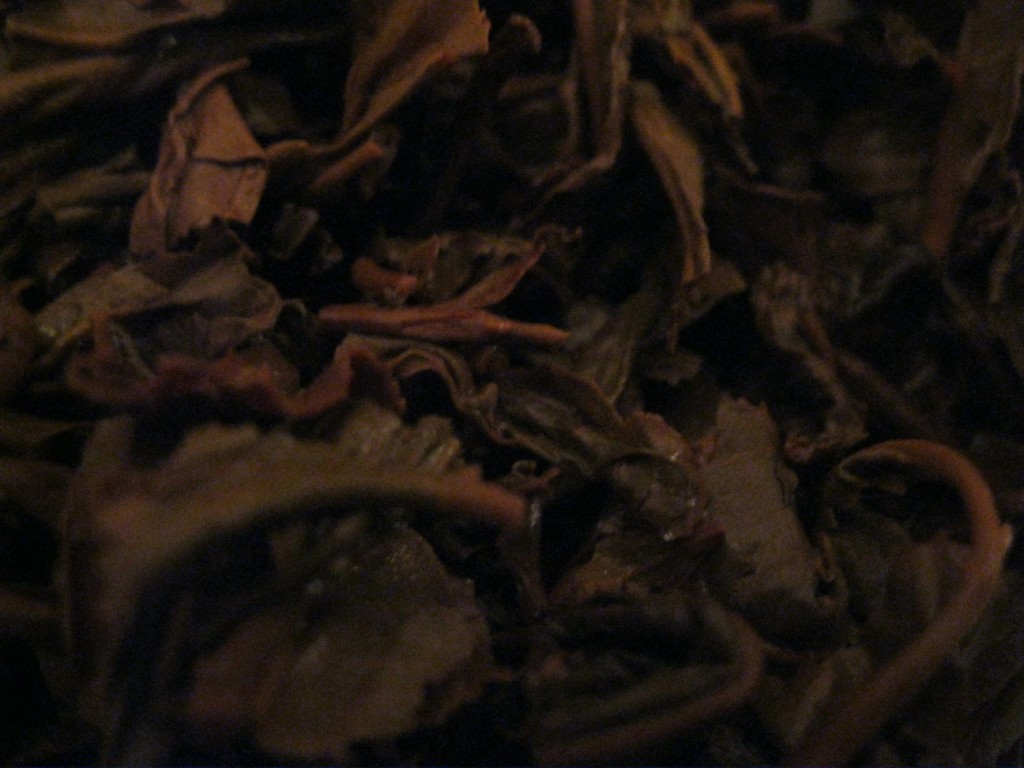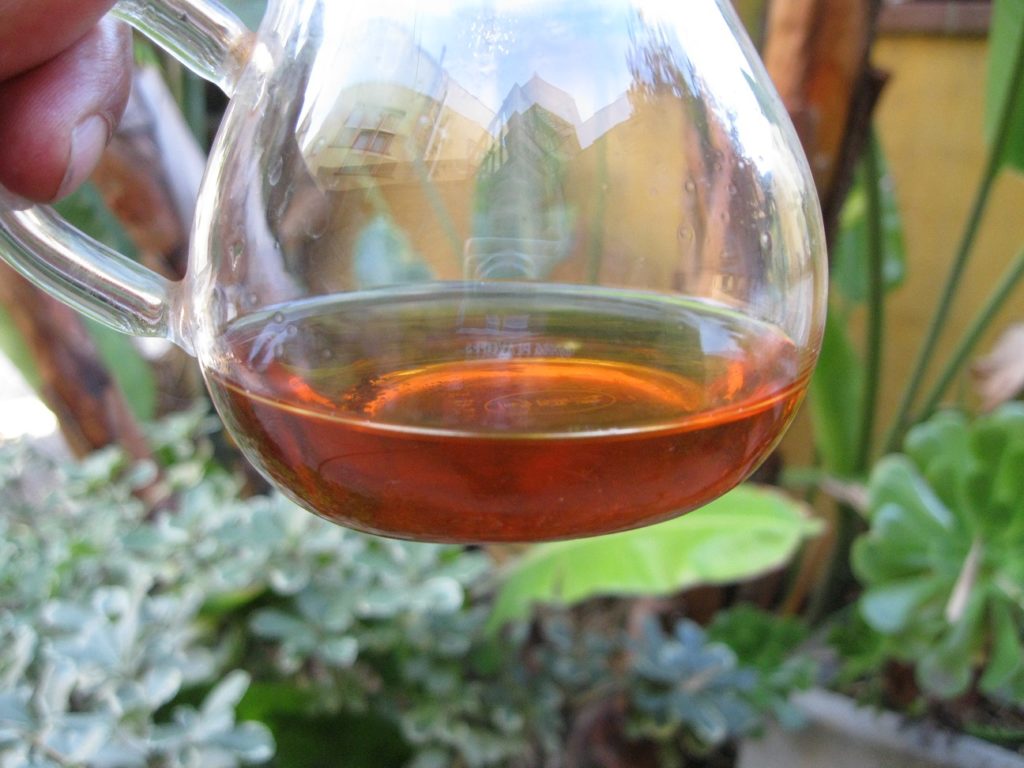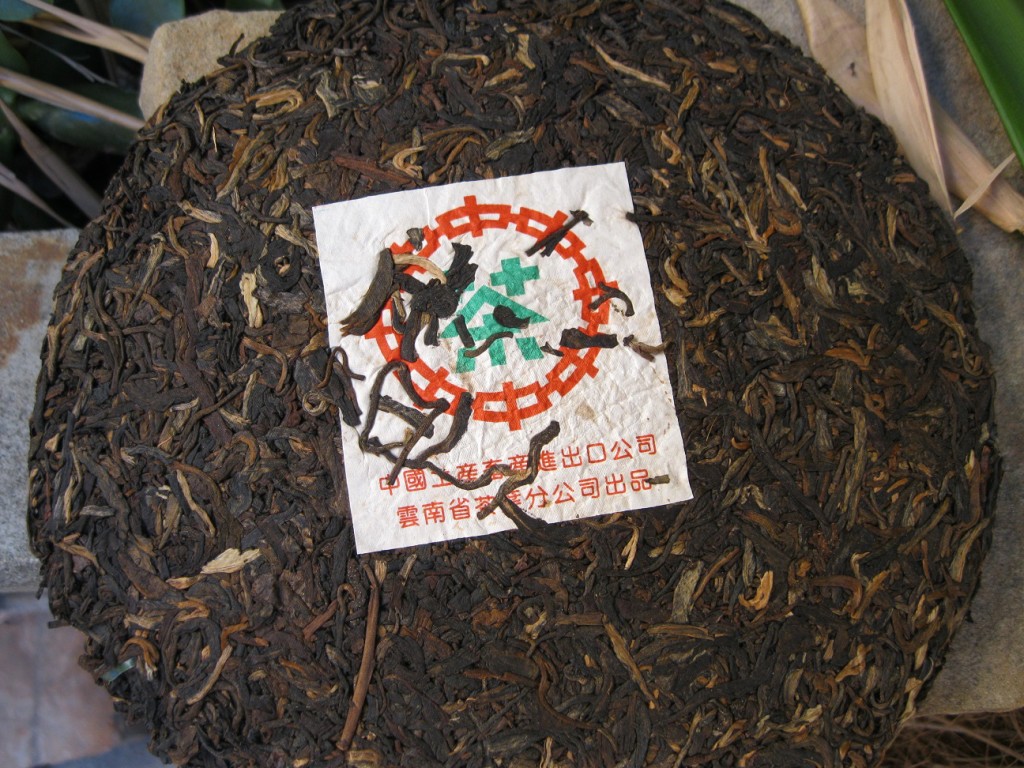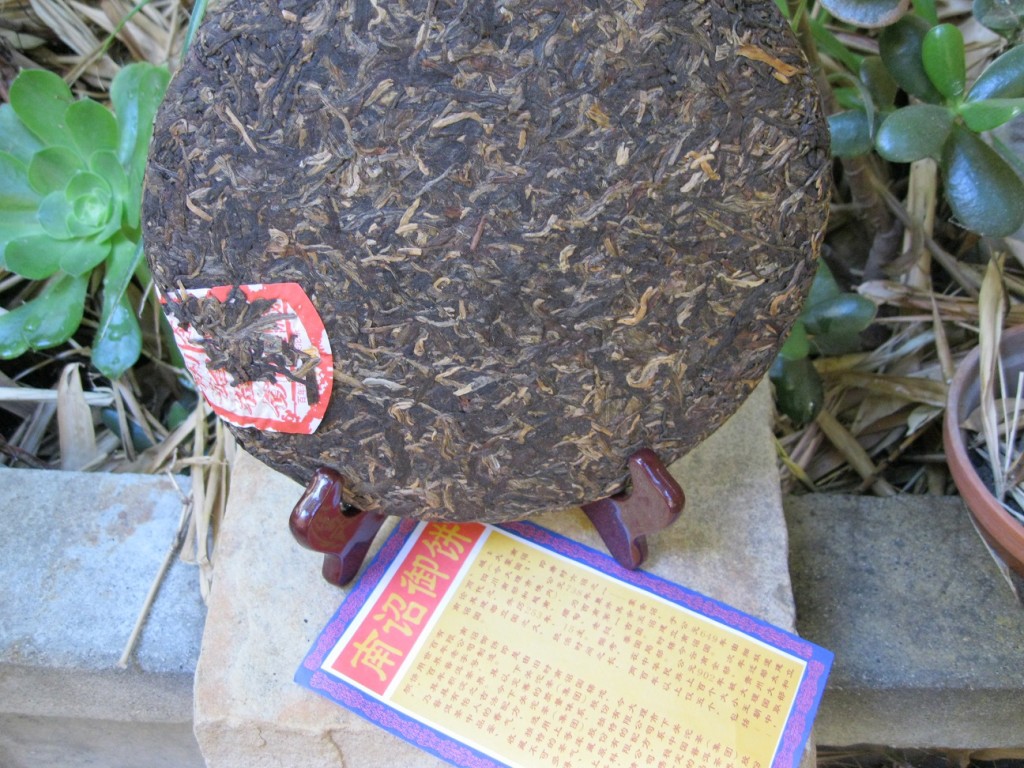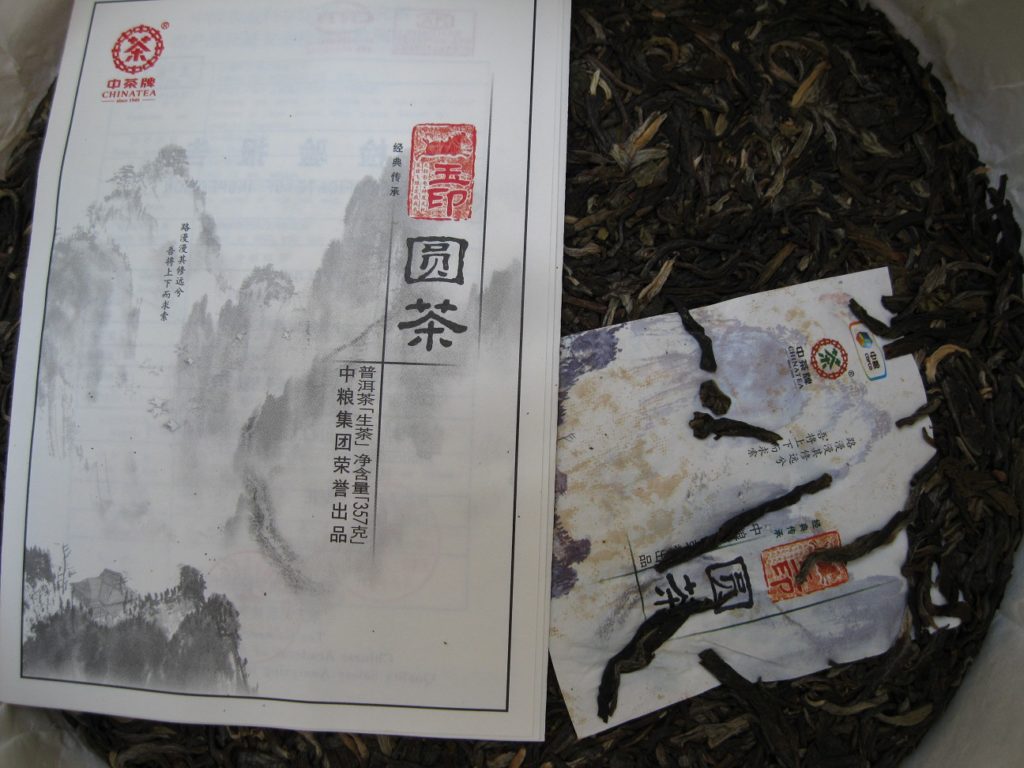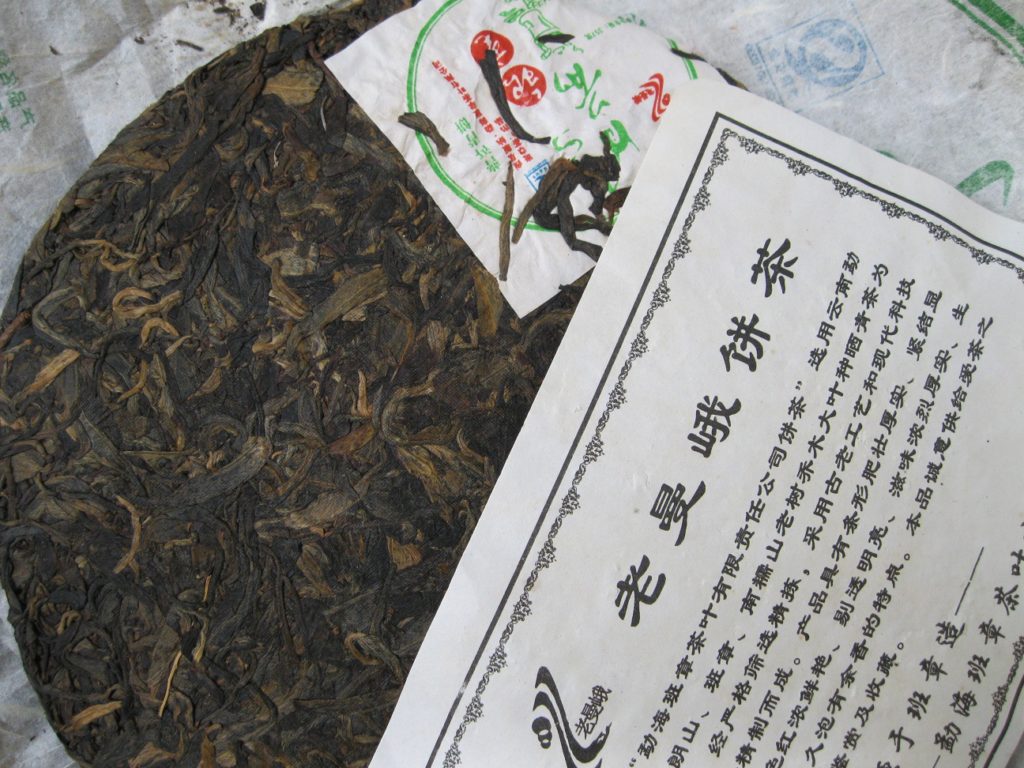Berryland Ho!
The ’07 Prince is aging up nicely. It’s starting to have an old taste. Not noticing so much vanilla in there as before. Seems to be working nicely in the warm weather. The huigan is still hanging on 10 minutes after the fact. Fruity. Berries. You’ve got to wade through at least four rounds before you get to it. The taste is remarkably light. Lightly bitter and sweet water. The broth on the thin side. By the 8th infusion the fruitiness of the aroma jumps out.
Here’s a shot taken 28 months ago.
Looks about the same, but the taste is quite different. Here’s a shot of the cashed leaves from today.
Here’s from 28 months ago.
It seems that the one from today is darker. I’m really surprised by the fruitiness, which makes me think of two things: Kunming storage and the original material. For 11 year-old puerh, overall it appears that the material has undergone remarkably little transformation. The thing is, I don’t taste any vanilla or camphor as my write up from two-plus years ago indicated.
Second, Yiwu material is known to be very light in taste with often a no-joke astringency. It is also known to get richer as it ages. The difference from say the Bulang or Wuliang is that these are very aggressive where aging is partly aimed at waiting for these productions to settle down. I can now descry the path upon which the Prince has embarked. Berryland ho!

